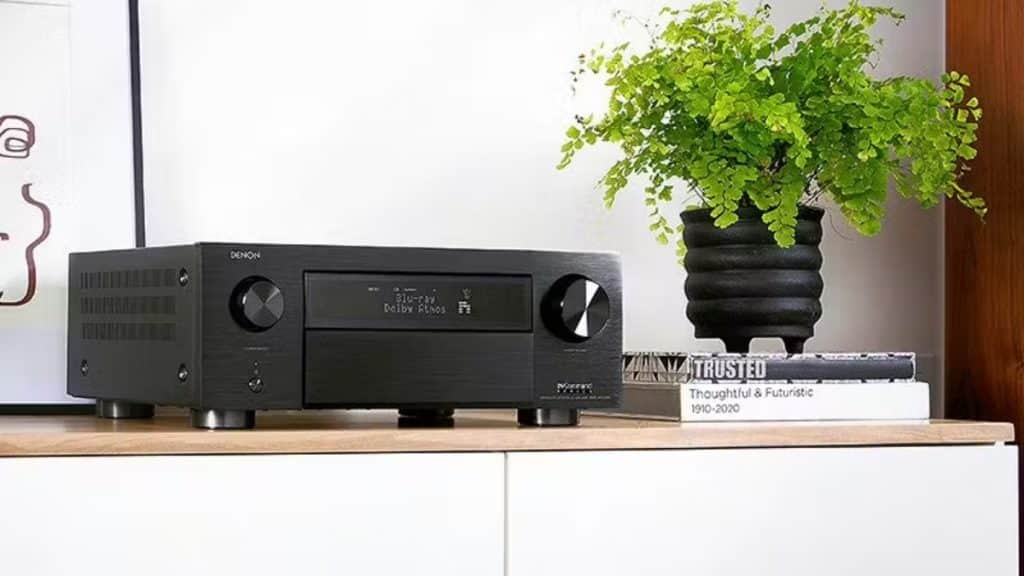An Audio/Video Receiver (AV Receiver) is designed to handle both audio and video signals, primarily used in home theater systems. Its main function is to receive, decode, and process signals from various audio and video sources such as Blu-ray players, game consoles, and televisions, and then output the processed signals to appropriate audio and display devices. AV receivers typically feature multiple input and output interfaces to connect various devices.
AV receivers mainly involve signal decoding and amplification. It first receives audio and video signals from different source devices and converts these signals into digital format through internal decoders. Many great distributors like Heisener offer a wide range of components of AV Receiver to cater diverse application needs.
The AV receiver then processes and enhances the audio signals, applying effects such as virtual surround sound and sound adjustments, before outputting the amplified audio to speakers. For video signals, the receiver performs image processing and enhancement before transmitting the video to a display or projector.
AV Receiver Electronic Components
In an AV receiver, several key electronic components play distinct roles:
Decoder: Converts receive digital audio and video signals into a format that can be processed. Audio decoders handle formats like Dolby Digital and DTS, while video decoders process HDMI signals.
Power Amplifier: Amplifies processed audio signals to sufficient power levels. Typically, power amplifiers have multiple channels to support multi-channel audio systems.
Signal Processor: Handles further processing and enhancement of audio and video signals. Audio processors may include virtual surround sound and equalizers, while video processors handle image enhancement, scaling, and color correction.
I/O Interfaces: Include HDMI, optical, coaxial, and RCA connections for linking various audio and video source and output devices. They manage signal reception and transmission.
Power Supply Module: Provides stable power to the AV receiver, ensuring consistent performance.
Control Unit: Contains microcontrollers or digital signal processors (DSP) to coordinate the operation of components and manage user inputs and settings through a remote control or front panel.
Pick the Best 4 AV Receivers Here
Denon AVR-X6700H
The Denon AVR-X6700H is a high-end 11.2-channel AV receiver that supports the latest Dolby Atmos, DTS, and Auro-3D formats. It features 8K/60Hz and 4K/120Hz passthrough. The receiver supports 13.2 channel processing and features advanced room correction with Audyssey MultEQ XT32.
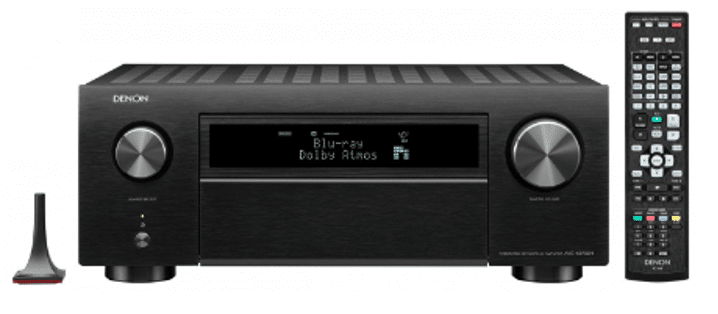
Specifications:
Manufacturer: Denon
Channels: 11.2
Power Output: 140W per channel (8 ohms, 20-20kHz, THD: 0.05%)
Inputs/Outputs: 8 HDMI inputs, 3 HDMI outputs, 2 digital optical inputs, 2 digital coaxial inputs, 1 Ethernet port
Other Features: Built-in HEOS for multi-room audio, voice control compatibility with Amazon Alexa, Google Assistant, and Apple Siri.
Yamaha RX-A8A
The Yamaha RX-A8A is part of Yamaha’s AVENTAGE series and offers 9.2-channel processing with support for the latest audio formats, including Dolby Atmos, DTS, and IMAX Enhanced. It provides 8K video support with four HDMI inputs and two outputs. The RX-A8A uses Yamaha’s proprietary CINEMA DSP HD3 for enhanced surround sound and features Zone 2 and Zone 3 powered outputs.
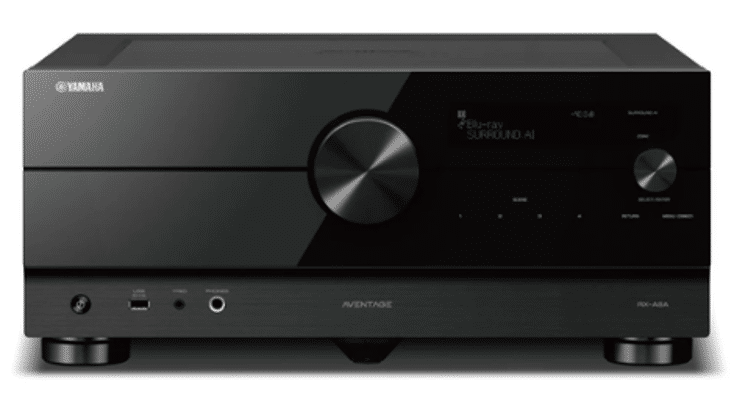
Specifications:
Manufacturer: Yamaha
Channels: 9.2
Power Output: 150W per channel (8 ohms, 20-20kHz, THD: 0.06%)
Inputs/Outputs: 4 HDMI inputs, 2 HDMI outputs, 2 digital optical inputs, 2 digital coaxial inputs, 2 USB ports
Other Features: MusicCast multi-room audio, YPAO R.S.C. room calibration, support for 3D audio formats.
Marantz SR8015
The Marantz SR8015 is a 11.2-channel AV receiver that offers advanced audio processing. It includes 8K/60Hz and 4K/120Hz video processing, with 11 amplification channels and 15.2 channel processing capability. The receiver features Marantz’s proprietary HDAM (Hyper Dynamic Amplification Module) technology for superior audio performance.
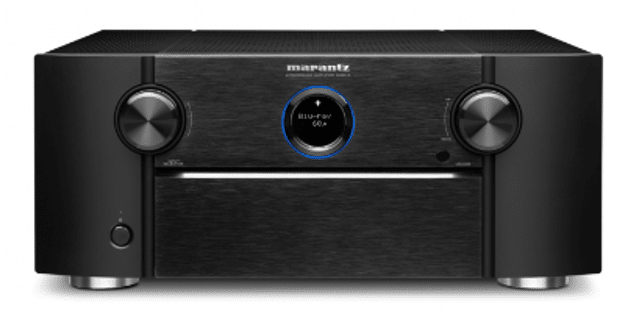
Specifications:
Manufacturer: Marantz
Channels: 11.2
Power Output: 140W per channel (8 ohms, 20-20kHz, THD: 0.05%)
Inputs/Outputs: 8 HDMI inputs, 3 HDMI outputs, 2 digital optical inputs, 2 digital coaxial inputs, 1 Ethernet port
Other Features: HEOS built-in for wireless multi-room audio, Audyssey MultEQ XT32 room correction, support for high-resolution audio streaming.
Onkyo TX-RZ50
The Onkyo TX-RZ50 is a 9.2-channel AV receiver designed for home theater enthusiasts. It supports Dolby Atmos, DTS, and IMAX Enhanced audio formats, and provides 4K/120Hz and 8K/60Hz passthrough. It features Onkyo’s AccuEQ room calibration system and has a high-current, low-impedance power output for better speaker control and performance.
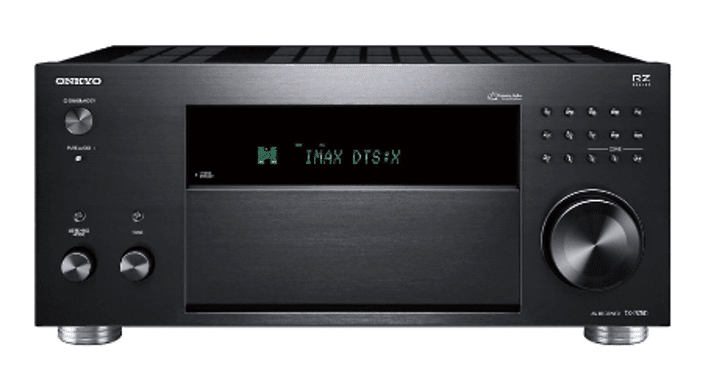
Specifications:
Manufacturer: Onkyo
Channels: 9.2
Power Output: 120W per channel (8 ohms, 20-20kHz, THD: 0.08%)
Inputs/Outputs: 7 HDMI inputs, 2 HDMI outputs, 2 digital optical inputs, 2 digital coaxial inputs, 1 Ethernet port
Other Features: DTSPro support, THX Certified Select, Zone 2 and Zone 3 powered outputs, integration with streaming services and smart home systems.
Applications of AV Receiver
The applications of AV receivers are extensive, providing users with high-quality audio and video experiences. They can receive and process audio and video signals from various devices such as Blu-ray players, game consoles, and televisions. By decoding, enhancing, and amplifying these signals, AV receivers output them to audio systems and displays, delivering high-definition visuals and immersive sound effects. Additionally, AV receivers are commonly used in multi-room audio systems, allowing users to enjoy synchronized or independent audio playback in different rooms.
Conclusion
The AV receiver uses built-in decoders to convert signals into processable formats, amplifies audio signals, and enhances both sound quality and image. This blog introduces the structure and applications of AV receivers and also recommends four top models available on the market, helping you make a more informed choice.
